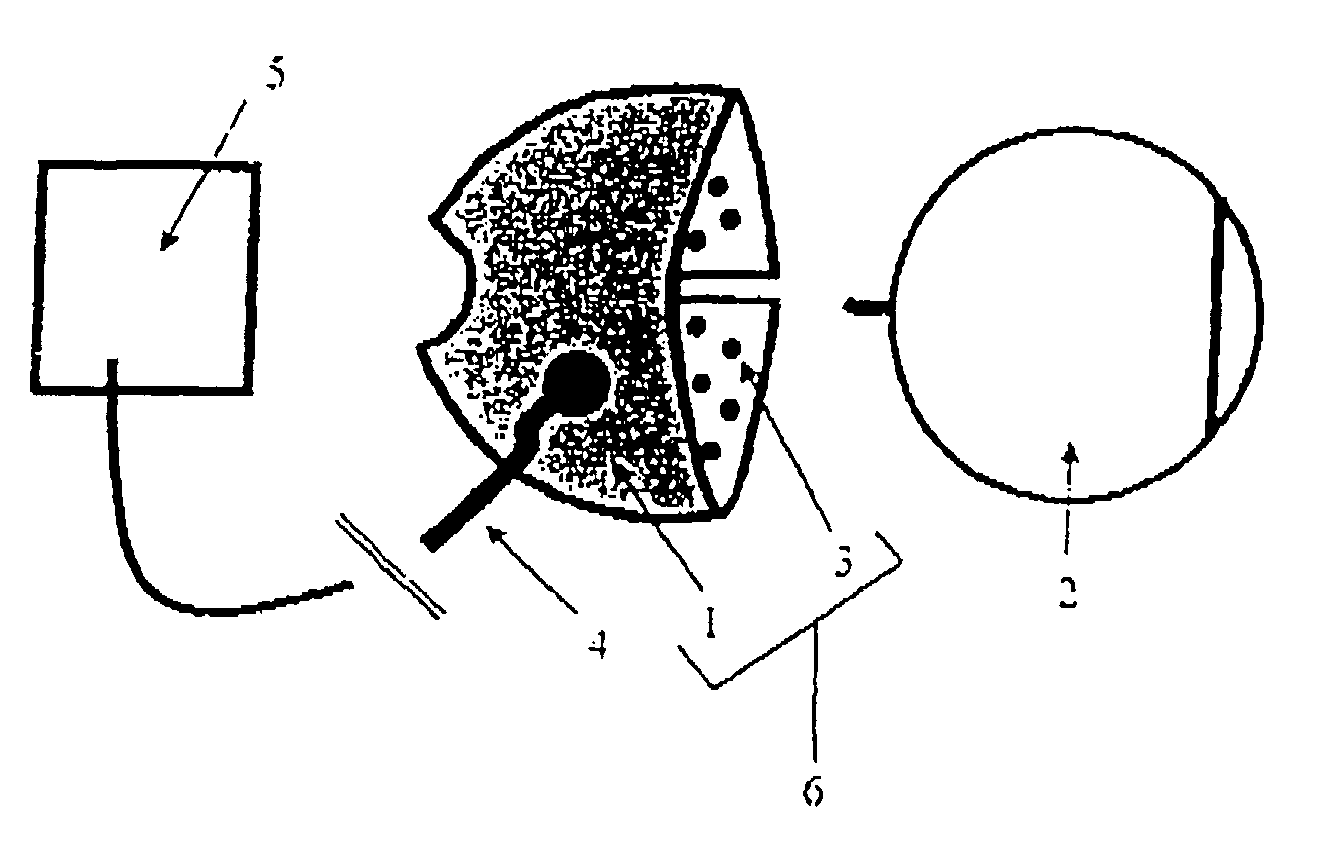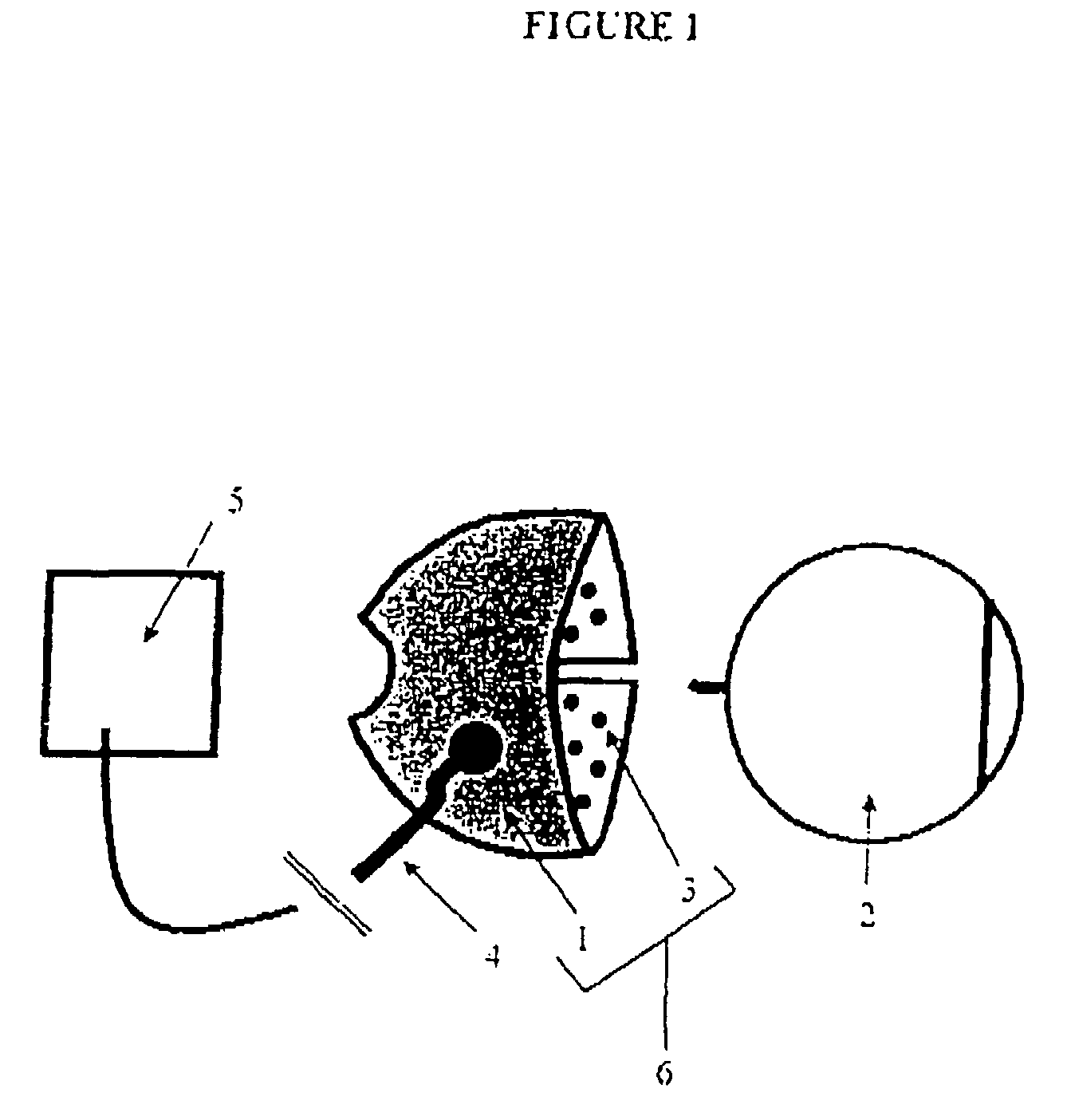Extraocular device
a technology of extraocular devices and ocular surfaces, which is applied in the direction of eye treatment, head electrodes, internal electrodes, etc., can solve the problems of permanent defects in the integrity of the globe, and achieve the effect of effective and safe ocular surfaces
- Summary
- Abstract
- Description
- Claims
- Application Information
AI Technical Summary
Benefits of technology
Problems solved by technology
Method used
Image
Examples
example 1
Development of a Retinal Prosthesis for Blind Patients Based on Extraocular Stimulation of the Eye with Disc Electrodes
[0121]The present study was undertaken to investigate the feasibility of an extraocular approach to retinal stimulation. This is the first study of an extraocular retinal prosthesis, an approach to visual prosthesis development for which a device has hitherto not yet been developed (Maynard, 2001, above; Margalit et al., 2002, above; Humayan et al., 2003, above). The present inventors intend to adapt the neuroprosthetic technology that is available in the Nucleus 24 Auditory Brainstem Implant (Cochlear Ltd, Australia). This implant has an electrode array of 21 platinum disc electrodes, each of 700 μm diameters, with a 950 μm centre-to-centre inter-electrode spacing, arranged in 3 rows in a silicone carrier. A number of electrode types, configurations, and stimulus methods were investigated to optimise the development of an extraocular retinal implant for the restora...
example 2
Establishment of Suitable Threshold, Strength-Duration and Evoked Response Amplitude Data for Electrical Stimulation of the Retina with an Extraocular Device
Materials and Methods
[0147]Acute experiments were carried out in anaesthetised cats, with adherence to the ARVO statement for the use of animals in ophthalmic and vision research, the NIH principles of laboratory animal care and in accordance with the guidelines of the animal ethics committee of the University of New South Wales. In adult cats (n=3), anaesthesia was induced with an intramuscular injection of ketamine (20 mg / kg) and xylazine (1 mg / kg). The animals were given a preoperative dose of subcutaneous atropine (0.2 mg / kg) and dexamethasone (1.5 mg / kg). The pupils were dilated with atropine (1%) and phenylephrine (10%) eye drops. After intubation, the animals were ventilated and anaesthesia was maintained with a 70:30 mixture of nitrous oxide and oxygen, with 0.5-1% halothane. ECG, end-tidal carbon dioxide, and core body ...
PUM
 Login to View More
Login to View More Abstract
Description
Claims
Application Information
 Login to View More
Login to View More - R&D
- Intellectual Property
- Life Sciences
- Materials
- Tech Scout
- Unparalleled Data Quality
- Higher Quality Content
- 60% Fewer Hallucinations
Browse by: Latest US Patents, China's latest patents, Technical Efficacy Thesaurus, Application Domain, Technology Topic, Popular Technical Reports.
© 2025 PatSnap. All rights reserved.Legal|Privacy policy|Modern Slavery Act Transparency Statement|Sitemap|About US| Contact US: help@patsnap.com



